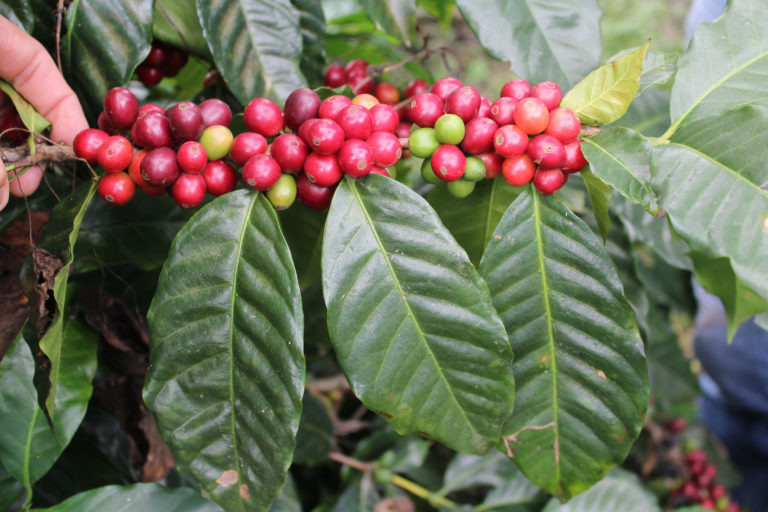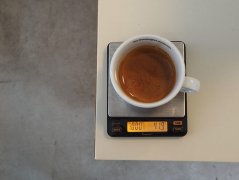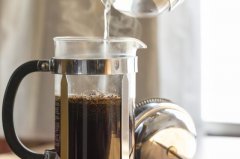The difference between Colombian coffee and espresso. Can Colombian coffee beans be made Italian?

Professional coffee knowledge exchange more coffee bean information please follow the coffee workshop (Wechat official account cafe_style)
It's time for us to popularize new science. There must be a variety of coffee beans that are easy to encounter when buying coffee beans on the market, and that is Colombian coffee beans. Colombia is the third largest coffee producer in the world. It is of good quality and has a long history. It is naturally loved by coffee fans. But for some small partners who don't know much about coffee-producing countries, they may wonder: what's the difference between Colombian coffee and the espresso we often drink in coffee shops? Can Colombian coffee beans be used to make espresso lattes?
Let's listen to the editor explain it:
Characteristics of Colombian coffee
1. Colombia is the world's largest exporter of washed coffee beans, the second largest exporter of Arabica coffee beans, and the third largest coffee producer and exporter.
2. Arabica coffee is mainly produced, which is of high quality and is mainly treated by washing.
3. Common varieties: bourbon, iron pickup, Castillo, Katim, Kaddura, Colombia
4. The distinctive characteristics of different producing areas make this place very famous among coffee-growing countries: 95% of Colombians are small estates with an area of less than 5 hectares, mainly in the form of small farmers and family trade, almost entirely by artificial production. it allows us to drink more diverse traits and differences.
History.
Colombian coffee was brought by church pastors among Spanish colonists at the end of the 17th century and was originally grown in the provinces of Santander and Boyaca in northern Colombia. Throughout the 19th century, coffee factories spread across the country, and the average farm size was generally smaller than that of other Latin American producing countries.
The commercial production and export of coffee began in the first decade of the 19th century, but there were still some restrictions before the 20th century: the establishment of the Colombian National Coffee Federation (FNC) in 1927 greatly promoted the development of the national coffee industry, and Colombia soon became a major coffee growing area, competing with Brazil and Vietnam for the title of top coffee producer in the world.
Colombia still produces only Arabica coffee, which has rebounded significantly through the development of disease-resistant plants and active treatment and prevention, despite a decline in production due to an outbreak of coffee leaf rust in the early 1910s.
Growth area
Colombian boutique coffee is mainly cultivated on steep slopes about 1300m above sea level in the Andes, where the annual temperature is about 18 ℃, annual rainfall is 2000 to 3000 mm, the specific range of elevation can exceed 2000m, has a very rich microclimate, can grow more than 80 different flavors of coffee, but also makes Colombia almost all the year round where ripe coffee is being harvested. This is why Colombian coffee is of high quality.
Characteristics of producing areas
The boutique bean producing areas of Colombian coffee are mainly in the south, with an elevation of more than 1500 meters, including St. Augustine (San Augustin,Huila) in Huilan province, Popayan,Cauca in Cauca province, Nari ñ o province and Tolima province. These places tend to have farms at higher elevations, with delicate and complex sour and raspberry aromas and caramel aromas that are full of sweetness. Among them, Huilan, Nalinglong and Kaoka producing areas are the most recognized among coffee lovers in China.
The central "coffee belt" in Antioquia, Caldas and Jindeo mainly produces types suitable for breakfast: soft nuts, high sweetness and low acidity.
The northern regions (such as Santa Marta and Santander) have higher temperatures and lower elevations, offering coffee that is thick and full-bodied, but with poor brightness and taste.
The soul of espresso-Italian concentrate (Espresso)
Steam pressure is used to push hot water over the coffee powder layer to extract a rich coffee liquid. at first, this early Italian coffee machine was only used in coffee shops, which could make a cup of coffee to customers more quickly, hence the name espresso (made for you now).
Espresso has many defined benchmarks, some more broad, others more stringent. I personally prefer the conclusion of a survey conducted by baristas in the United States that nearly 70% of people choose 1:2 powder to drink best, and more than 60% choose 25: 30 seconds to drink best. and nearly 60% chose to extract with 18g powder.
At the same time, concentration is the basis for all espresso. Any coffee that is not up to standard, no matter how beautiful it is, is not delicious, so you can only take a picture and send it to your moments to pay for it.
American coffee (Americano)
American coffee originated during World War II, when the US military drank Italian concentration, it felt too strong, so it asked to add some hot boiled water to the coffee, diluted to the taste acceptable to Americans, known as American coffee. Many years later, Australians thought that hot boiled water would taste better if it was concentrated. However, there is no obvious difference in taste between the two methods. If it is condensed, the upper layer of fat looks better.
I have heard all kinds of opinions about how much water American coffee takes, from 1:4, 1:5, 1:6, 1:7 to 1:8. I am used to diluting Espresso from its gold cup standard concentration of 8% 12% to the upper limit of the gold cup standard concentration of single coffee (1.4% 1.5%). This may also be the reason why many guests say that my American style is the same as drinking a single drink.
Cappuccino (Cappuccino)
I wonder why domestic books and teaching materials almost exclusively define cappuccino as concentrated: milk: milk foam = 1:1:1, I try to do this by myself, it's really bad. However, most of the domestic stores produce 240ml-300ml, and some boutique coffee shops are 150ml-200ml. It seems difficult to find a unified standard.
Cappuccino is the designated milk coffee in the barista contest, it tastes really good when it's done, and it will be bad if you don't do it well. Personally, I think it should be adjusted and made according to the specific use of coffee beans and delicious according to the competition standard of WBC 150-180ml.
Latte (Coffee Latte)
Latte is the most familiar espresso in China, which simply means coffee (coffee) + milk (latte).
Latte means milk. If you order a latte in Italian, the waiter will only give you a glass of milk. Next time remember to order a latte and say, "Boss, have a latte without milk!"
Fu Ruibai (Flat White)
In a nutshell, it's a small, stronger latte. Australians say it belongs to his family, New Zealanders say it belongs to his family. There are also a variety of domestic coffee shop translators: Australian white, plain white, fragrant white, white coffee.
Most people want to drink a cup of coffee but are afraid of being too bitter, so they are usually deceived by the word "white" (I won't tell you that many years ago, I ordered a cup of white coffee.), it turns out to be more bitter than lattes and cabs.
Caramel macchiato (Carame Macchiato)
Love sweet lady's favorite. Note that Carame Macchiato and Macchiato are two very different things.
Summary:
Colombia is a huge coffee-producing country, where all the coffee beans can be called Colombian coffee beans, and as long as they are coffee beans, they can be made into Italian coffee through an Italian coffee machine. Colombian coffee has a profound impact on the coffee industry around the world. Colombian coffee is added to the blended beans used by many coffee shops to make espresso, including the coffee chain Starbucks.
END
Important Notice :
前街咖啡 FrontStreet Coffee has moved to new addredd:
FrontStreet Coffee Address: 315,Donghua East Road,GuangZhou
Tel:020 38364473
- Prev

Coffee beans the difference between Italian and individual coffee the difference between single coffee and fancy coffee
Professional coffee knowledge exchange more coffee bean information Please follow the coffee workshop (Wechat official account cafe_style) when buying coffee beans, we often hear the shopping guide ask, do you want to buy Italian beans or individual beans? What's the difference between Italian coffee beans and individual coffee beans? Let's start with the difference between espresso and single coffee.
- Next

The Development of Fine Coffee (scaa) A brief introduction to the concept and definition of Fine Coffee
Professional coffee knowledge exchange more coffee bean information Please follow the coffee workshop (Wechat official account cafe_style) in recent years, coffee drinkers have more or less heard the term boutique coffee, but the editor can guarantee that even professional coffee practitioners, nine times out of ten, can not say what the definition of standard premium coffee is. It's not that the concept of fine coffee is so vague.
Related
- Beginners will see the "Coffee pull flower" guide!
- What is the difference between ice blog purified milk and ordinary milk coffee?
- Why is the Philippines the largest producer of crops in Liberia?
- For coffee extraction, should the fine powder be retained?
- How does extracted espresso fill pressed powder? How much strength does it take to press the powder?
- How to make jasmine cold extract coffee? Is the jasmine + latte good?
- Will this little toy really make the coffee taste better? How does Lily Drip affect coffee extraction?
- Will the action of slapping the filter cup also affect coffee extraction?
- What's the difference between powder-to-water ratio and powder-to-liquid ratio?
- What is the Ethiopian local species? What does it have to do with Heirloom native species?

